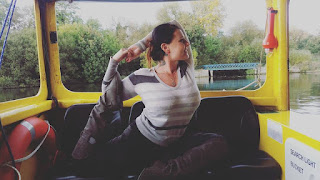ANDREA - a full time Yoga, Pilates and Tai Chi instructor.
I fell in love with yoga over seven years ago, when I got a Nintendo DS and bought a game called Let's Yoga. From then, I began 'playing' yoga everyday, sometimes twice a day. At first, the practice was more physical for me, but after few months I started to really count on yoga to bring me a sense of calm during especially chaotic days. Soon after, I began recognizing the benefits of a regular asana and meditation practice and continued to incorporate yoga daily - not just during times of chaos. I found myself feeling more energized, more compassionate, happier, and with more awareness. Now, I teach full-time and couldn't be happier to do what I love. What began as a physical practice for strength and flexibility quickly became a lifestyle. I teach my students to take their yoga off the mat and apply the principles learned in the class to their lives outside of the studio. I do not only teach my philosophy, I live it.
Tuesday 25 October 2016
Yoga in Cotswold
Monday 10 October 2016
What is Tai Chi?
 Sometimes called “meditation in motion,” a Tai Chi workout is a series of soft, flowing movements choreographed into a slow routine. Each specific movement corresponds with either the inhalation or exhalation of a deep, gentle breath. This coordination of movement and breath is believed to free the flow of “chi” (also spelled “qi”), a life-force energy that when blocked, purportedly can cause stress and illness. By improving the mind-body connection, Tai Chi brings the yin and yang of a person back into natural harmony, exercising emotions just as it does the muscles.
Sometimes called “meditation in motion,” a Tai Chi workout is a series of soft, flowing movements choreographed into a slow routine. Each specific movement corresponds with either the inhalation or exhalation of a deep, gentle breath. This coordination of movement and breath is believed to free the flow of “chi” (also spelled “qi”), a life-force energy that when blocked, purportedly can cause stress and illness. By improving the mind-body connection, Tai Chi brings the yin and yang of a person back into natural harmony, exercising emotions just as it does the muscles.



















